Habitations
Panará
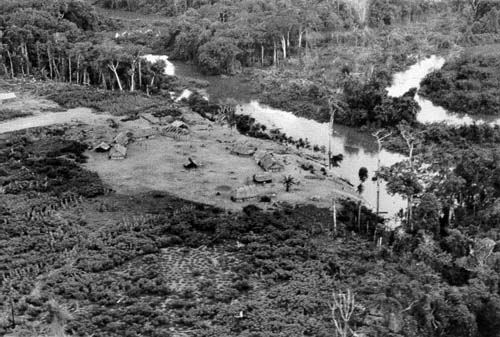 Foto: André Villas-Bôas, 1999.
Foto: André Villas-Bôas, 1999.
Panará, like the majority of the peoples of the Jê linguistic family, live in round villages near the State limits of Mato Grosso and Pará. The houses are built on the edge of the circle. At the center, the space for political and ritual activities, is where the House of Men is located.
Krahô
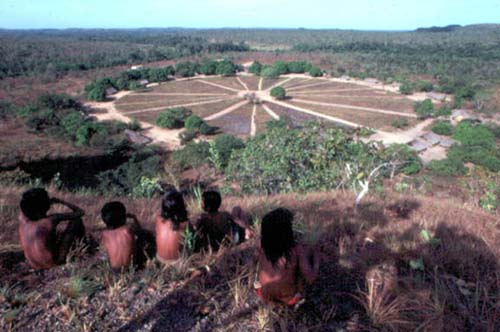 Foto: Vincent Carelli, 1983.
Foto: Vincent Carelli, 1983.
The villages of the Krahô (TO), of the State of Tocantins, people of the Jê linguistic family, follow the Timbira ideal of disposing the houses along a wide circular path, with each of them connected by a radial pathway to the central patio.
Gavião Parkatejê
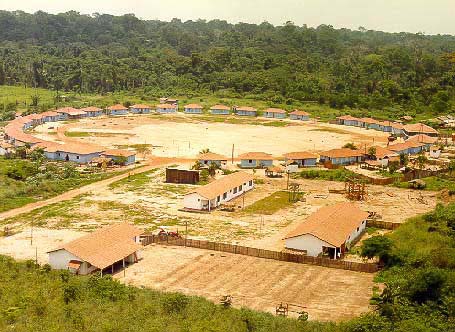 Foto: Arquivo ISA,1984.
Foto: Arquivo ISA,1984.
The Gavião Parkatêjê (PA) of the State of Pará speak Oriental Timbira (Jê linguistic family). This is one of their villages, Kaikotore. It is made of 33 brick houses built around a circle with a diameter of approximately de 200 meters. There is a wide path around the circle, in front of the houses, and several radial pathways linking it to the central patio, where all ceremonial activities are held.
Marubo
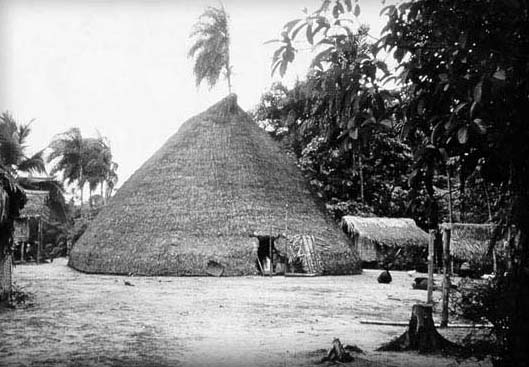 Foto: Delvair Montager, 1978.
Foto: Delvair Montager, 1978.
Among the Marubo, a group that belongs to the Pano linguistic family of the Javari River Valley, in the State of Amazonas, the only inhabited building is the elongated hut, covered with grass and ivorypalm from top to bottom, that is in the center of the village. The buildings around it, raised from the ground with stilts, are used as deposit and are individual properties.
Enawenê-nawê
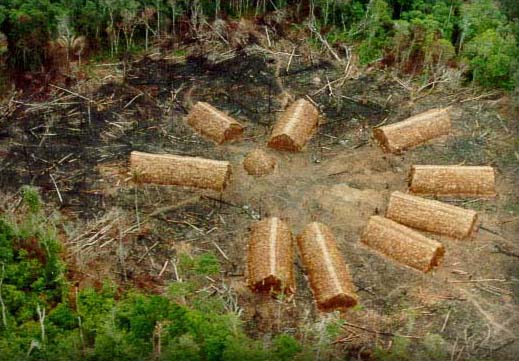 Foto: Ana Lange, 1979.
Foto: Ana Lange, 1979.
The Enawenê-nawê of the State of Mato Grosso, a group that belong to the Aruaque linguistic family, live in villages made of large rectangular houses. A circular house, built more or less in the center, is where their flutes are kept. Rituals and games are held in the central patio.
Yanomami
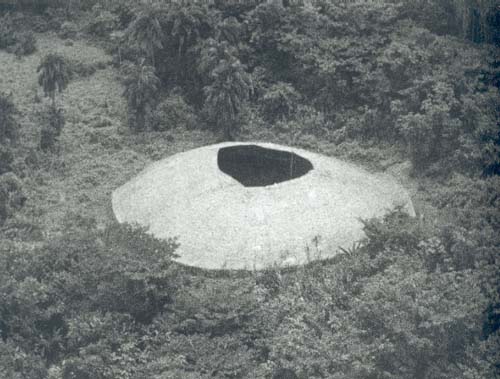 Foto: René Fuerst
Foto: René Fuerst
The Eastern and Western Yanomami usually live in a single hut inhabited by several families, such as the one of the photo, of the Tootobi group of the State of Amazonas. Considered an autonomous political and economic entity, it is the home of all the members of the village.
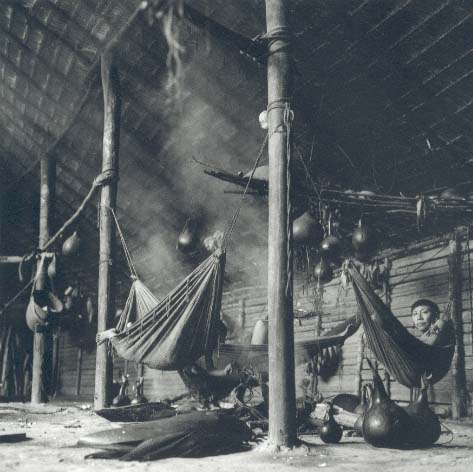 Foto: René Fuerst, 1961.
Foto: René Fuerst, 1961.
Here, the interior of a collective yanomami house.
Peoples of the Negro River
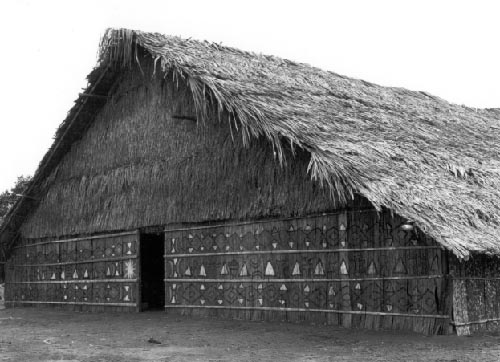 Foto: Beto Ricardo, 1993.
Foto: Beto Ricardo, 1993.
The maloca-museum São João (‘maloca’ is the name of an Indian hut), on the Tiquié River, State of Amazonas, is an example of how the so-called ‘forest Indians’, who spoke languages of the Aruaque and Tukano families, of the regions of the Upper Negro River basin, used to live. It is not just a community house, but also an essential space for the performance of rituals. Its internal design makes it possible for those who live in it to revive, in great ceremonies, the trajectory of mythical ancestors.
Palikur
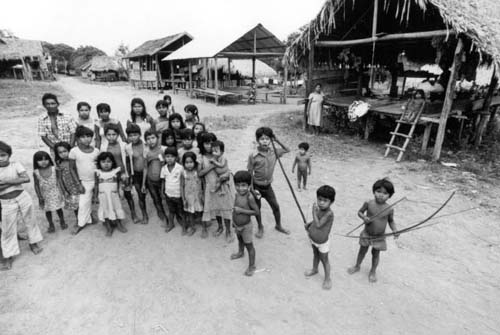 Foto: Vincent Carelli, 1982.
Foto: Vincent Carelli, 1982.
The Palikur of the State of Amapá also belong to the Aruaque linguistic family. Their villages are built facing the river. In the largest of them, Kumenê, the houses are built along two parallel streets.